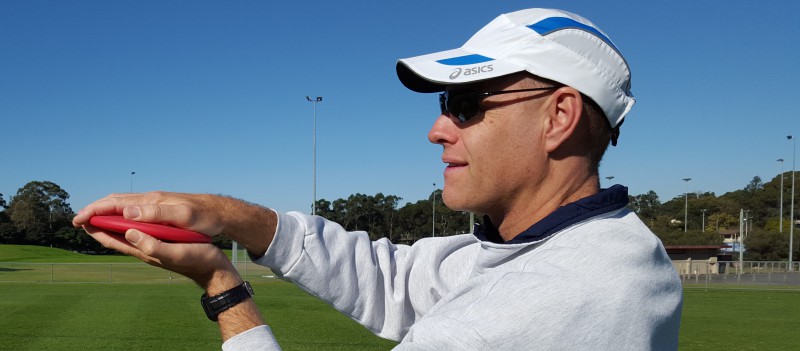Look Out for These Common Sprinting Errors When Coaching Young Athletes
Below are 10 of the most common skill errors that I see kids make when they are sprinting. I’d love for you to continue the list in the comments section of this blog:
1. Poor head position
Even though most kids look forward when they run, some do so with their head tilted back or forward. The kids with their heads back generally need to lower their chin. The kids with their heads down usually need to lift their gaze.
Regardless, teach kids a posture where their ears are over their shoulders and their chin is down (but not tucked).
Many very young athletes move their heads excessively as they run. We have all seen children look from side-to-side during a race, either at their fellow competitors, or even at mum or dad on the sidelines! I have even seen children “nod” as they run.
Encourage the kids to look to the front or to the finish line and keep their heads level and still.
2. Leaning excessively forwards or backwards
Kids should “run tall”. It is not uncommon for kids to run with an excessive forward lean, bending at the hips.
I like to tell young athletes that if they run crouched forward, their “legs don’t have room to move”, so they need to be “tall” as they run.
Less common, but still a problem, is kids leaning back as they run. This can sometimes be caused by a youngster responding to the instruction to “lift your knees”, their exaggerated effort leading to their entire torso leaning backwards.
3. Rotating/twisting torso
Rather than keeping their body square to the front, many youngsters rotate their torso from side-to-side as they run. This leads to the dissipation of forces away from the direction of the run. A turning of the upper body in one direction will result in a turning of the lower boy in the opposite direction and therefore a young athlete will continually have to fight to maintain balance and their forward motion. There can be a number of causes of a twisting torso, some of which are mentioned below, including a misdirected arm action.
I tell kids that their “belly button wants to see where they are going” and “doesn’t want to get dizzy” by being swung from side-to-side.
4. Swinging arms across their body
Many youngsters swings their hands and arms across the mid-line of their body. This is often the result of their elbows being lifted up and away from their sides, and is one cause of a the twisting torso, mentioned in the point above.
Tell young athletes to tuck their elbows in or to “brush their sides” with their arms as they rehearse their arm action.
5. Straight arms
It is not uncommon for very young athletes to keep their arms straight when they run. This is another cause of a rotating torso.
To encourage a bent arm action, I tell young athletes to keep their arms bent “like the corner of a square” and to swing their elbows back.
6. “Sitting” posture
One of the most common errors among young runners is their tendency to “sit” when they run. In other words, they run with “low hips” due to their support leg collapsing and not fully extending.
I have found that it is difficult to do a lot technically to quickly correct this as it is often caused by a lack of leg stiffness and stability in their running gait.
Instructing an athlete to run with “high hips” may assist.
7. Low knee lift
It is common to see young athletes run with a low knee lift. This will negatively affect their stride length. Cues that I have found successful in remedying this include telling athletes to “pick up their feet” or imagine that they are “running through shallow water”.
8. Excessive back-side leg mechanics
Related to the above item, many young athletes run with a leg action that is almost entirely behind them. Ideally a sprinter should tuck their heel to their backside as their knee is lifted to the front. It is common for young athletes to bring their heel towards their backside while their knee is still pointed down. This problem is often combined with an excessive forward lean.
I found an effective cue to help improve this is to tell young athletes to “run in front” of themselves.
9. Feet turned out
It is really common for young athletes to turn their feet out to the side when they run. Make sure that you observe and/or video young athletes running towards you to identify if they are doing this; it is something that is often missed.
An athlete who turns their feet out to the side are dissipating forces away from the direction of the run. You can often observe their foot twisting back towards the front as they push off the ground, which is very inefficient. There is also the obvious concern with potential injury if a young athlete continues to run with their feet splayed to the side.
I have had success with solving this problem by simply reminding athletes to turn their feet/toes to the front during drills and when running. I have also had athletes run along a line and asked them to ensure that their foot strike is as parallel to the line as possible.
10. Asymmetrical action
Closely watch a young athlete run and you will often see differences between the movement of one side of their body and the other. E.g. One hand is driven higher than the other, one leg is lifted higher than the other, or one heel flicked out to the side. This has obvious negative effects on their balance and movement efficiency.
The best solution that I have so far found to this is to make the young athlete aware of this problem and constantly cue them to fix it. Reviewing a video of their running gait with the athlete is also very effective, as they are seldom aware of the problem and its extent.
Note:
If you are unsuccessful at coaching some of the above problems out of a young athlete, consider that more than a coaching-based solution may be required. A medical professional may be able to identify a muscle tightness or imbalance, or a structural issue that is causing the technical issue, and offer a therapeutic solution such as a stretching routine.
What common technical mistakes do you see young athletes make while they are sprinting?
You can add to the above list by clicking on “Leave a Comment” located on the left sidebar or by scrolling down to the “Leave a Reply” box below. I would also love to hear if you have any solutions other than those noted to any of the common mistakes identified.
Further reading
Article:
Improve Your Sprinting With These 15 Simple Technique Tips
E-Book:
A Fun Sprints Lesson Plan For Kids E-Book by Coaching Young Athletes
If this post helped you please take a moment to help others by sharing it on social media. If you want to learn more I encourage you to leave questions and comments or contact me directly.
Darren Wensor is a sports development professional, coach educator, specialist coach of young athletes, and founder of the blog coachingyoungathletes.com. Learn more about him here and connect with him on Twitter, Facebook, Linkedin, or via email. Check out Coaching Young Athletes on YouTube, the Coaching Young Athletes podcast, and the Coaching Young Athletes E-Book Series.
Click here to subscribe for free to the Coaching Young Athletes email list and receive a complimentary mini e-book!
Do you want that little bit extra? Learn about Coaching Young Athletes membership HERE.
If this post helped you please take a moment to help others by sharing it on social media. If you want to learn more I encourage you to leave questions and comments or contact me directly.
Darren Wensor is a sports development professional, coach educator, specialist coach of young athletes, and founder of the blog coachingyoungathletes.com. Learn more about him here and connect with him on Twitter, Facebook, Linkedin, or via email. Check out Coaching Young Athletes on YouTube, the Coaching Young Athletes podcast, and the Coaching Young Athletes E-Book Series.


Brilliant info once again. What are your thoughts on closed hands when running. Not clenched but kids who are happy to sprint like they are holding something. Does thumbs up, open palms turned inwards make a huge difference?
LikeLike
Thanks Kirsty. I actually wrote a short article about this topic about a year ago. See https://coachingyoungathletes.com/2015/06/24/how-potato-chips-can-help-teach-young-sprinters/. I hope that this helps!
LikeLike
[…] 10 of the Biggest Mistakes Young Athletes Make When Sprinting […]
LikeLike
Hi Darren,
I’ve worked through a few of these issues with my 9yo daughter, but the latest limiting factor I have discovered from video replays is point 6. “Sitting” posture.
Do you have any cues I can give my daughter to get her to run with higher hips?
Love your website being a self taught coach to my daughter, it’s a great resource and confirmation of suitable coaching methods for kids.
LikeLike
Just a 2nd thought after I sent this message.
It’s possible the sitting running posture may be due to being more quad dominant rather than hamstring/glute dominant.
Do you thing doing some type of hamstring hyper extension exercises may help here?
LikeLike
I don’t really focus my strength development exercises on specific parts of the body for young athletes. I focus on whole body activities such as bear crawls, crab walks, etc.
LikeLike
Hi Adrian. Different cues will work with different kids and sometimes it is a matter of trial and error to see what “clicks”. With various success depending on the athlete, I have used: “High hips”, “Hips forward” “Lead with your belt buckle”. Sometimes no cue will work as it is not a matter of a lack of skill or understanding of the skill, but a lack of strength. A certain amount of strength is a prerequisite for even the most fundamental skills, hence the new recommendation that strength development be a priority throughout all development stages. Darren
LikeLike
Great Article! My son plays baseball and his biggest challenge is running. He runs like he has lead in his shoes. He is no longer running almost flat footed but he still looks like his feet weigh 100lbs. Any advice?
LikeLike
Thanks for your feedback. “Heavy” running can often be caused by a “low” running action. See what happens if, in practice, you get him to stick a piece of coloured tape on the front of his shirt just below his belly button and instruct him to lead his running action with the tape, or push the tape towards an object in the distance. I would love to hear if this works! I have had good success with it. Darren
LikeLike